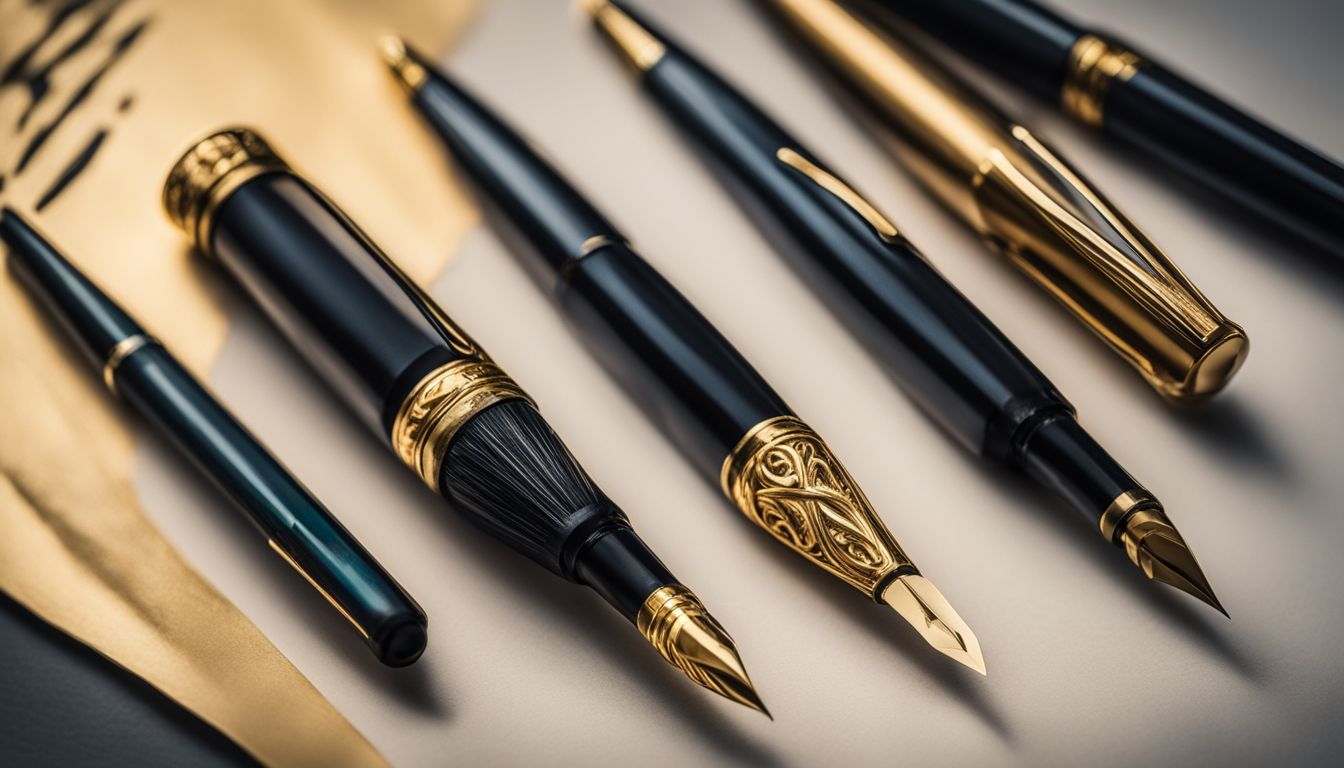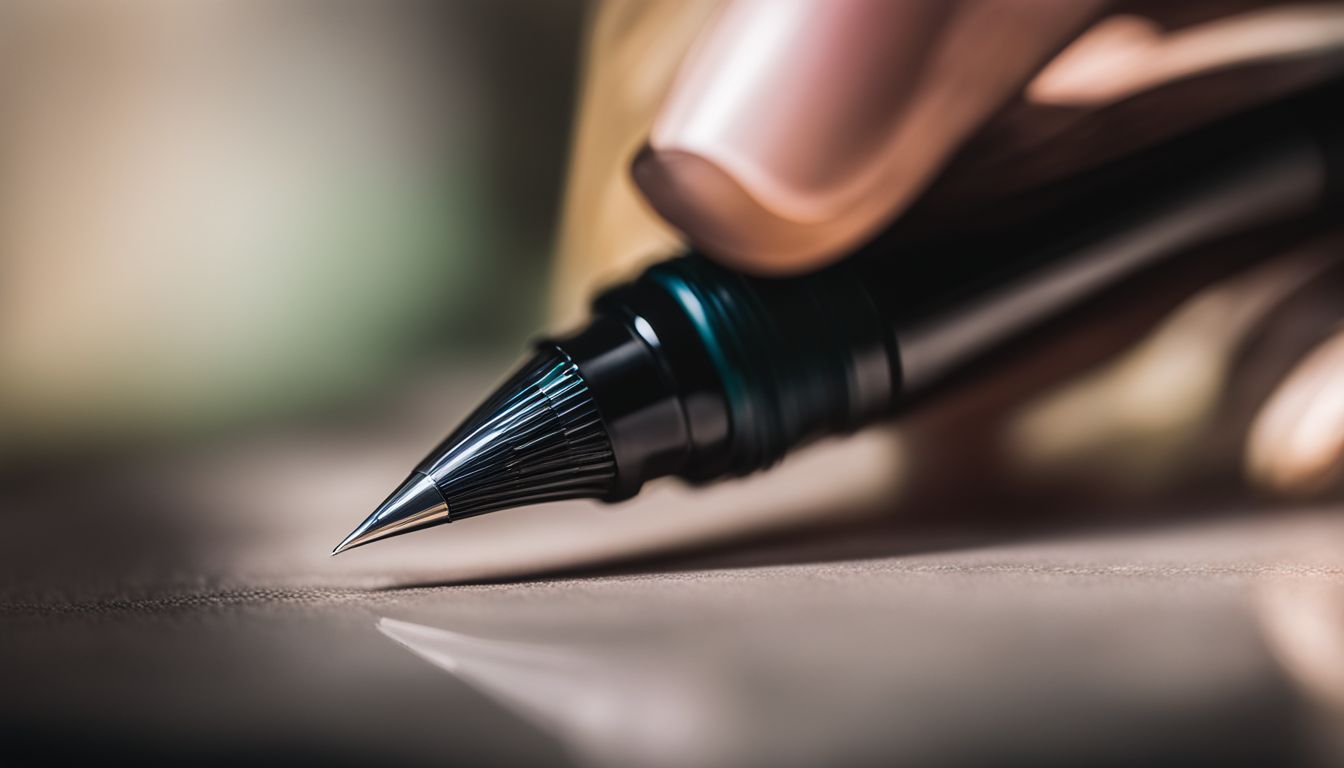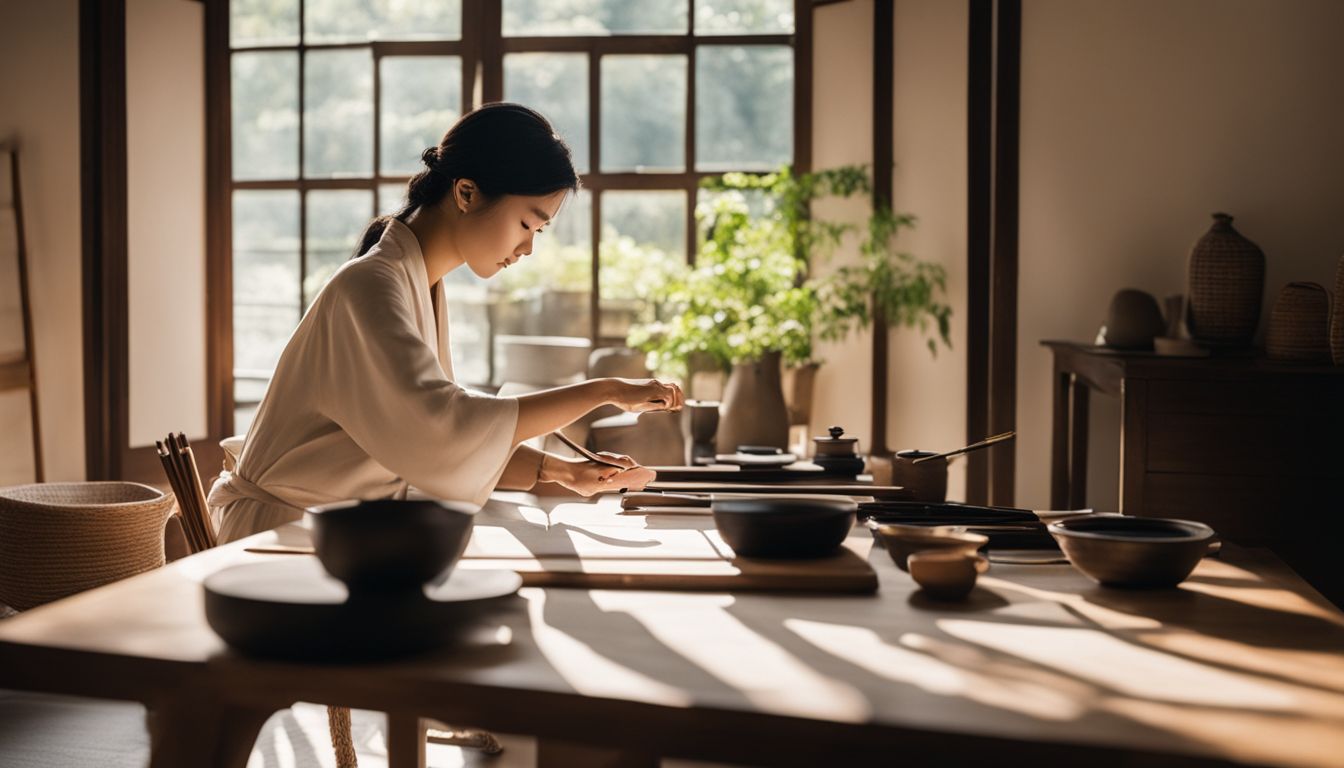Anyone who has used a fountain pen has wondered if the nib will ever glide more smoothly across the page. It’s true that with patience and regular use, even the most stubborn fountain pen nib can become your smoothest writer.
This guide is packed with insights and techniques to transform your scratchy scribbler into a silky scribe. Keep reading to unlock the secrets of a smoother writing experience!
Key Takeaways
- Gold nibs soften and adapt to your writing style faster than steel nibs because gold is a softer metal.
- Scratchy fountain pen nibs can be caused by misaligned tines; checking alignment with a loupe might solve the issue without professional help.
- Using coarse paper initially, rinsing the nib, or using micromesh can speed up the process of making your fountain pen write smoother.
- Regular cleaning and careful tine adjustment are important for maintaining smooth ink flow in fountain pens.
- Online reviews on sites like Amazon can provide useful insights into different experiences with the smoothness of various nib materials.
The Role of Nib Material in Fountain Pen Smoothness

Gold nibs are known for their quick adaptation to your writing style. A 21K gold nib might start out firm, but it will usually become smoother as you write. This happens because gold is a soft metal.
As you use the pen, the tip adjusts to how you press and move it across paper.
Specialty nibs like italic or oblique have unique shapes for different writing effects. However, they may not smooth out over time like other nibs do. An architect nib, used for special lettering, can stay feeling scratchy even after years of use due to its precise design made for specific strokes.
When to Be Concerned About a Scratchy Nib

A scratchy nib can be annoying. It might even ruin your writing experience. You should check the nib if it feels rough on paper after several uses. Look for signs of misalignment with a magnifying glass or a loupe, as this could cause the scratchiness.
If you see that the tines are not lined up right, they will need adjusting.
Other times, a new ink or different paper may solve the problem without needing to fix the pen. However, sometimes scratches mean more than just an alignment issue. Deep grooves in your tipping material shouldn’t be there and point to bigger problems that might require expert help or replacement.
Now let’s explore what else influences how smooth or scratchy pen nibs can feel while writing.
Factors Influencing the Scratchiness of Nibs
Understanding the factors that contribute to nib scratchiness is crucial for every fountain pen enthusiast, and our deep dive into these influences will help you achieve that effortlessly smooth writing experience you covet.
Nib Design
Nibs come in different shapes for various writing styles. Specialty nibs like italic and architect may always feel a bit scratchy. This is because of their unique cuts that make specific lines thicker or thinner.
These designs can affect how smooth the pen feels on paper.
The way a nib splits ink onto the page also matters. If tines are not aligned right, you might get scratchiness while writing with your fountain pen. Always check alignment before assuming there’s an issue with the nib material itself.
Misalignment can be seen using a magnifying glass or loop and fixed, but take care—you could ruin it if you’re not careful!
Paper Type
The nib design plays a significant role, but the paper you use is just as crucial. Rough paper can make even the best fountain pen feel scratchy. It’s like running a race in the wrong shoes; you won’t get far without feeling it.
On smoother surfaces, your nib glides effortlessly, letting ink flow beautifully onto the page.
For an ideal match, choose high-quality paper such as Rhodia Le R pads that complement your writing instrument. These papers reduce friction and help prevent damage to your pen’s tip over time.
Remember, fine-tuning your nib on premium paper makes all the difference—a key step towards achieving that perfect writing experience.
Misalignment of Tines
Misaligned tines on a fountain pen can make writing feel scratchy and uncomfortable. Tines are the two metal pieces that come together at the point of the nib. If they’re not in perfect alignment, your pen won’t glide smoothly across paper.
Instead of grabbing pliers and trying to fix them yourself, it’s smarter to take your pen to an expert. Trying to adjust tines without experience could ruin your nib.
Experts use special tools and magnification to see tiny details when aligning tines. They have steady hands and know just how much pressure is needed for adjustments. Practice on cheaper pens before you attempt any DIY fixes or leave it to professionals who will realign those tines seamlessly for you.
Remember, smooth writing depends on perfectly aligned tines!
Techniques to Expedite the Smoothening Process
Whether you’ve just invested in a pristine fountain pen or are looking to rejuvenate an old favorite, the path to silky smooth script doesn’t have to be long and winding. With a few insider tricks—minus the lengthy wait—you can accelerate your nib’s journey from scratchy scribe to buttery wordsmith with finesse and ease.
Rinsing the Nib
Rinsing the nib is a simple yet effective step to take before you start using your fountain pen. It helps clear away any tiny bits of metal, dust or oil left from when the pen was made.
Just run some cool water over the nib and gently dry it with a soft cloth.
After rinsing, your pen is ready for ink. Next up is choosing the right paper to bring out the best in your fountain pen’s performance.
Using Coarse Paper Initially
After cleaning the nib, one might consider using coarse paper as a next step. This kind of paper can help break in the nib faster. The surface of rough paper provides just enough resistance to wear down any small imperfections on the fountain pen’s tip.
Imagine sanding wood – that’s what coarse paper does to your pen nib.
Draw gentle figures like loops and swirls on this type of paper with your fountain pen. Don’t press too hard; let the texture do its work. Over time, these actions will make your nib glide more smoothly across any page you write on.
Using Micromesh or a Smoothing Stick
Smooth writing can also come from using micromesh or a smoothing stick on your nib. These tools are like fine sandpaper for fountain pens. They gently wear down rough spots and make the nib slide across the paper more easily.
You start with a finer grit and work your way up to even finer ones, just like polishing a gemstone.
Before you use these tools, check your pen’s warranty. Some companies won’t fix pens if they’ve been altered at home. It’s best to learn how to use micromesh or a smoothing stick properly before trying it on an expensive pen.
Practice on cheaper models first so you don’t ruin your favorite fountain pen by accident.
Fountain Pen Reviews and Their Insights on Nib Smoothness
People love to share their experiences with fountain pens online. They talk about how different nibs feel when they write. Reviews on sites like amazon.com can tell you a lot about nib smoothness.
Some say steel nibs are tough at first but get nicer with use. Others mention that gold nibs start off softer and smoother.
You might read about someone using micromesh to make their pen glide better across the paper. This is part of the smoothing process for new pens or rougher ones. Reviewers often suggest checking tines alignment if your pen scratches too much.
A loupe helps see if the tines need fixing to improve writing flow.
Maintaining a Smooth Nib
Keep your nib smooth by cleaning it regularly. Ink residue can build up and make the writing feel rough. Flush your fountain pen with water every few weeks to prevent this. If you notice ink flow is uneven or your pen starts skipping, it might be time for a thorough clean.
Take care of tine alignment for a consistent flow. Misaligned tines can cause scratchiness that no amount of use will fix. You can adjust them gently with your fingers or use a loupe to get a closer look.
Remember, soft touches are key – too much pressure could damage the nib beyond repair.
Conclusion
Your fountain pen’s journey to smoothness starts with its very first stroke. Gold nibs might glide smoothly after a few uses, while steel ones ask for a bit more patience. Remember, misaligned tines can be the culprit of scratchiness—check and adjust if needed.
Embrace the process; before you know it, your trusty pen will dance across the page with ease. Write on, and let time work its magic!
For more insights on how various fountain pen models perform in terms of nib smoothness, check out our fountain pen reviews.
FAQs
1. Will my fountain pen nib get smoother the more I write with it?
Absolutely! Your fountain pen’s nib is likely to become smoother after regular use. The friction between the nib and paper wears down any rough edges, much like sand grits smooth out a surface.
2. What if my pen’s nib doesn’t feel smooth even after using it for a while?
If you’ve been writing regularly and the nib still isn’t gliding as you’d like, consider a bit of DIY smoothing with micro-mesh or taking it to a professional for tuning.
3. Can I make my fountain pen nib smoother on my own?
Yes, you can! With some patience and careful use of fine abrasives like micromesh or whetstone grits, you can polish your own fountain pen nib at home – just go slow and steady.
4. Are there tools made specifically for smoothing fountain pen nibs?
Definitely – there are specially designed tools called ‘nib smoothing kits’ that come with various grades of abrasives tailored for this job; they’re perfect to help get that buttery-smooth writing experience.




Leave a Reply
You must be logged in to post a comment.